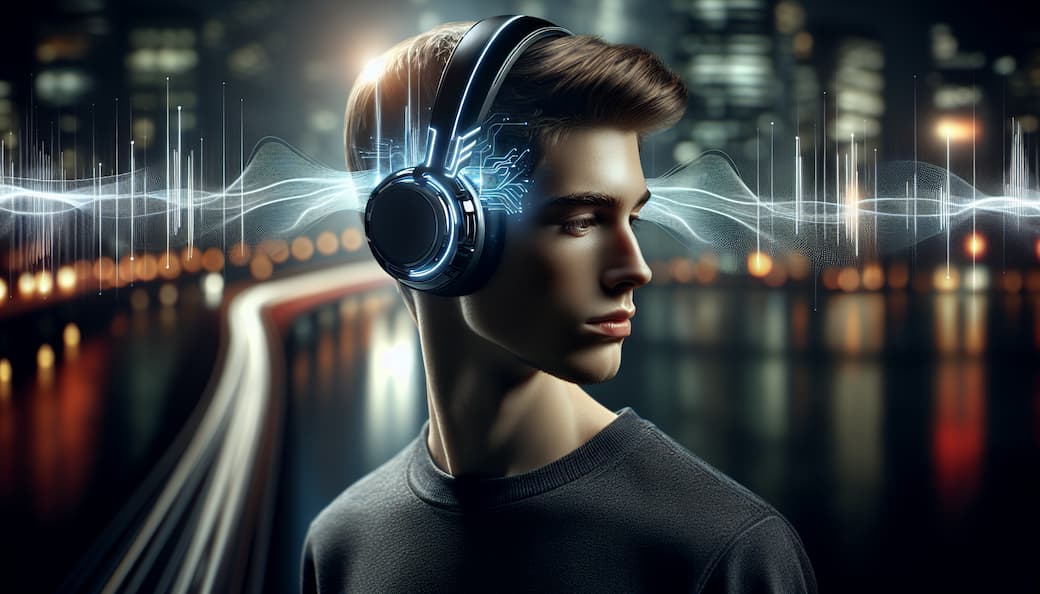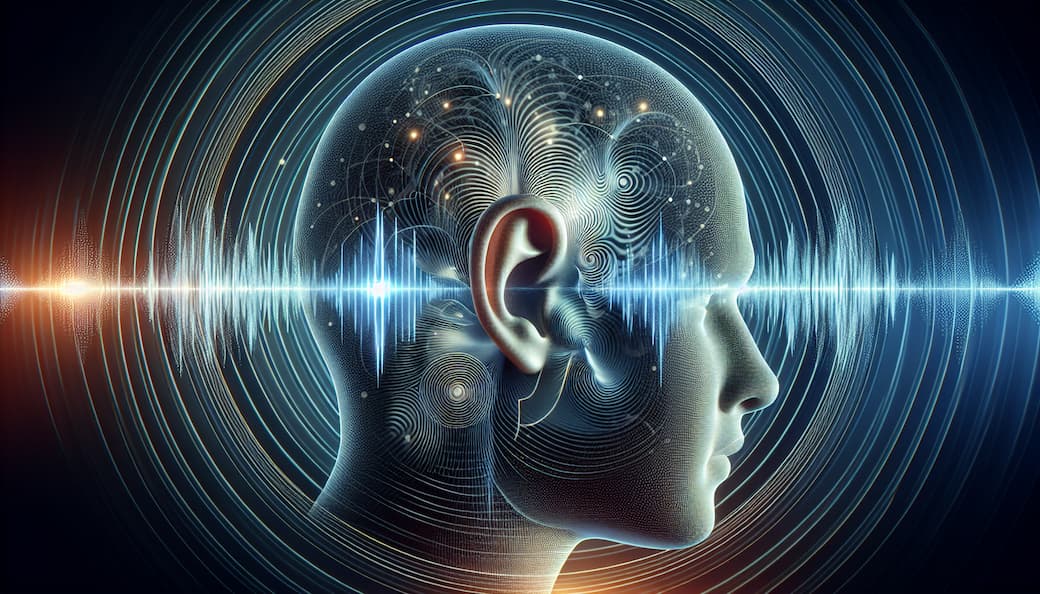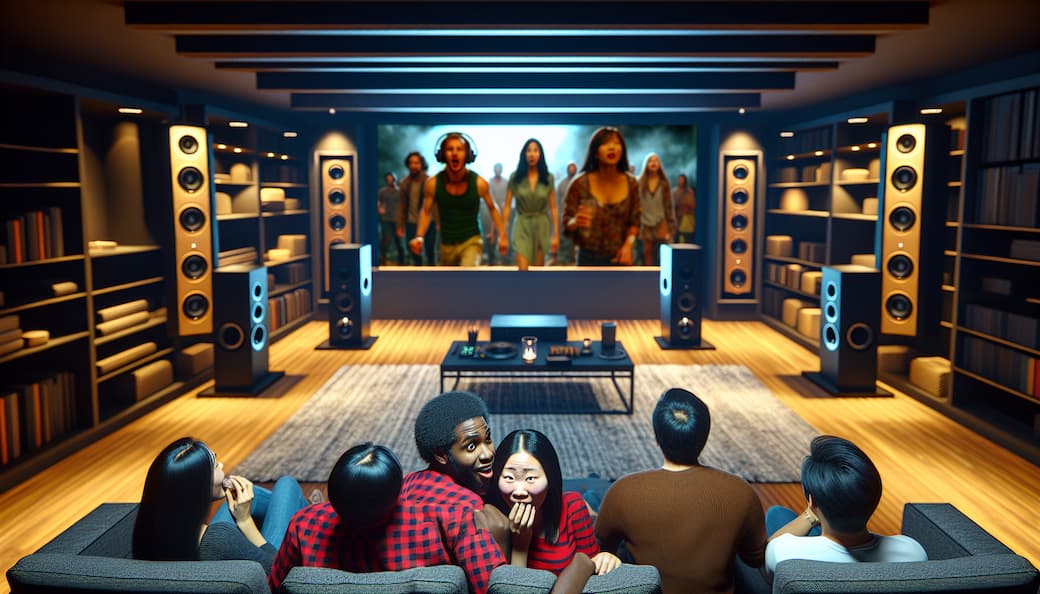
Audio Spatialization: How to make your sound 3D
Content
Audio spatialization creates an immersive soundscape where audio surrounds you in a 3D space. This guide unpacks the essentials of spatial audio, from its principles to its practical application across different media, providing the know-how to enhance your audio projects or simply enjoy a deeper listening experience.
Key Takeaways
- Spatial audio technology enhances the auditory experience by creating a three-dimensional soundscape, delivering realistic sound from different directions and distances to increase engagement in music, movies, and gaming.
- Implementing spatial audio involves selecting the appropriate audio sources, accurately positioning them in a 3D environment, and utilizing dynamic volume and distance control to maintain an authentic soundscape.
- The advanced spatial audio experience is supported by an array of technologies, including Dolby Atmos, Apple Music, compatible headphones, and game engine tools, enabling artists and developers to deliver immersive audio experiences across various media.
Disclaimer: This article was generated by AI, but I corrected it to draw near to my high standards
Understanding Spatial Audio

Spatial audio, an advanced technology, revolutionizes the way we perceive sound from traditional stereo speakers and channels to a fully immersive soundscape. Through replicating multi-directional and distance-based audio effects, spatial audio provides a truly enveloping listening experience.
To enjoy this remarkable feature to its fullest potential, simply enable it in your device settings. Factors like orientation, proximity, and reverb have significant impacts on creating a realistic and captivating spatial auditory environment.
Integrating spatial audio into media content enhances user engagement and enjoyment by delivering an incredibly immersive listening sensation. This revolutionary technology greatly elevates the authenticity of music playback as well as enriches movie-watching or video game-playing experiences with cinematic-level surround sound effects.
As demand for such enhanced content grows rapidly, so do benefits for both creators and consumers alike who are embracing this innovative approach to experiencing dynamic soundscapes.
Surround Sound vs. Stereo
While for example, stereo sound limits the audio experience to two separate channels played through a pair of speakers or headphones, surround sound elevates it by utilizing multiple speakers for an all-encompassing auditory environment. This means that instead of only hearing sounds from left and a sound moves right, you will hear them coming from different directions.
Spatial audio takes this immersion even further. Advanced techniques such as dynamic head tracking tricks the listener’s brain into perceiving sounds moving around in three-dimensional space regardless of their device’s orientation.
As a result, there is increased realism and sense of being present as the audio appears to be heard originating from various angles depending on how one moves right speaker with their head.
Head Tracking and Personalized Spatial Audio

Spatial audio offers the listener more than just an immersive sound environment. It boasts a special feature, known as head tracking, which adjusts the audio based on the listener’s movement to create a lifelike experience.
With spatial audio comes personalization using the listener’s individual ear shape. This is captured through their device’s front-facing camera and results in a heightened level of immersion for each unique listening experience tailored to that specific individual. Read more on personalized spatial audio.
Implementing Spatial Audio in Your Projects
Integrating spatial audio into your projects can take the user’s auditory experience to a whole new level. The essential steps in this process involve careful selection of an appropriate audio source right speaker, accurately placing sound sources in space, and skillfully controlling distance and volume of stereo speakers.
Choosing the right type of audio and sound source, is crucial. This entails considering how sounds are positioned in 3D space and striving to replicate that within the mix. Proper placement of sound sources at specific points in the audio environment is key to creating a fully immersive effect.
It is important to effectively manage both distance and volume to maintain authenticity – as sounds perceived by listeners decrease with increasing distance from their position.
Choosing the Right Audio Source
Selecting the appropriate audio source for spatialized audio audio typically involves choosing mono sound sources. These are easily manipulable in a 3D environment, offering versatility to conserve storage and produce an immersive three-dimensional auditory experience.
Mono sounds work well for representing specific points within a spatialized audio projects, such as individual sound effects or voices, since they can be accurately positioned in a 3D space – unlike stereo sources that already have depth and separation due to their dual-channel format.
But of course, it can make sense to use other formats such as stereo, surround or ambisonics signal to be spatialized. It depends on the example if I record a sound with 360 microphones or use post-processing to be heard later on.
Positioning Sound Sources

Precise placement of sound sources is crucial when creating a virtual environment with spatial audio. To achieve an immersive effect, it is important to position the sound sources at the right ear front level while taking into account the listener’s location in relation to them. Placing microphones as close as possible to these sound sources can also greatly improve audio quality by reducing background noise.
Distance and Volume Control
In spatial audio, the volume of a sound source is perceived to decrease as it moves away from the listener’s position. This phenomenon, known as sound attenuation, is crucial in producing an immersive and realistic audio experience. By adjusting various factors such as distance and rate, one can replicate the natural perception of distance.
Another important aspect in creating convincing spatial audio is determining minimum distance properties for each individual sound source. These properties dictate at what point there will be no reduction in volume even with increased physical distance between the listener and the audio source – ensuring that within this specific range, the full intensity of the speaker and original sound can still be heard by listeners.
The Science Behind Spatial Audio: Head-Related Transfer Function (HRTF)

The concept of spatial audio delves into the fields of acoustics and psychoacoustics, exploring how sound interacts with our head and ears. At its core is the Head-Related Transfer Function (HRTF), which encompasses various elements such as reflection, scattering, and diffraction in any direction in order to create a sense of directionality within the direction of auditory signals.
Through HRTF analysis, we can understand how sound waves interact differently depending on their source’s location relative to our head and torso. This provides crucial cues for localizing sounds, including differences in time between each ear’s perception of sound localization as well as variations in volume level experienced by each listener’s position and ear.
Interaural Level Difference and Time Delay
The ability to locate and hear a sound source is greatly influenced by differences in sound level and time delays between the ears. Interaural level difference (ILD) describes how each ear perceives a different volume of sound, caused by the head’s spatial position and frequency-dependent acoustic shadow.
Similarly, interaural time delay (ITD) refers to discrepancies in when sounds reach each ear. This timing disparity assists our brain in accurately localizing the direction of the sound source based on these auditory cues heard from both ears. ILD and ITD play crucial roles in our brain’s processing of sounds for effective sound localization here.
Read more on how binaural sound helps us to localize sounds.
Spectral Shadowing and Ear Canal Resonances
Sound perception in spatial audio is affected by several intriguing factors, such as spectral shadowing and ear canal resonances. Spectral shadowing refers to changes in sound frequencies caused by obstruction, creating monaural cues that influence the perception of sounds behind a listener left or right ear.
In the realm of spatial audio, for example, this phenomenon produces what is known as the ‘head shadow’ effect which impacts how we perceive sounds located at our backs.
On the other hand, ear canal resonances operate like an open-closed chamber that amplifies sound moves certain frequencies near its fundamental resonance frequency, resulting in a natural boost of sound within the ear canal.
Tools and Technologies for Spatial Audio
The popularity of spatial audio has led to the emergence of numerous tools and technologies that assist in its implementation. Two notable examples are Dolby Atmos and Apple Music, both highly praised for their support of spatial audio, which allows for sound to move around listeners from various directions.
With compatible headphones and built-in speakers, access to this technology is now possible on a range of devices.
In the realm of video game development, specialized engines such as FMOD Studio, Wwise, and Steam Audio play an integral role in integrating spatial audio into interactive experiences. These tools facilitate seamless integration with games, allowing for immersive auditory effects through advanced techniques such as dynamic mixing capabilities.
Dolby Atmos and Apple Music
The field of spatial audio is being revolutionized by Dolby Atmos and Apple Music, known for their remarkable sound encounters.
By adapting to the device and system it’s played on, Dolby Atmos delivers a fully immersive sonic experience while integrating with Apple Music allows users to enjoy music in spatial audio through access to Dolby Atmos content, surrounding them with multidimensional sound.
This advancement gives artists an avenue for creating dynamic auditory experiences utilizing precise directionality and clarity within their tracks, exclusively available on these two platforms powered by none other than renowned brand Apple.
Compatible Headphones and Built-In Speakers
Spatial audio can be enjoyed by speakers using headphones or built-in speakers that are compatible. Headphones such as the Apple AirPods Max, Sony WH1000XM4, Razer and Beats have a reputation for being suitable for spatial audio. Here is a more dedicated overview of 3d Headphones for Dolby Atmos and Surround sound.
To this same way, devices with 3rd generation built-in speakers like the Sonos Era 300, Apple’s HomePod and Amazon’s Echo Studio also support spatial audio technology which allows listeners to fully immerse themselves in stunning three-dimensional sound experiences. And here find out how soundbars and smartspeaker enrich your home entertainment.
Game Engines and Audio Middleware
When it comes to implementing spatial audio in video games, game engines and audio middleware play a significant role. Some popular game engines and audio middleware that facilitate spatial audio implementation are:
- FMOD Studio
- Wwise
- Steam Audio
- Resonance Audio’s cross-platform SDKs
These tools enable developers to integrate spatial audio middleware and manage spatial audio sources.
The choice of audio middleware is a crucial decision for developers, with FMOD Studio and Audiokinetics Wwise being widely recommended due to their specialized features and extensive industry adoption.
Real-World Examples of Spatial Audio

The realm of spatial audio is not confined to academic discussions and trial runs. It has found practical application in diverse fields, offering an unparalleled sense of engagement across different media.
Spatial audio is revolutionizing our consumption of media ranging from films and television shows to video games and music creation, rapidly becoming the standard in these industries.
Movies and TV Shows
In the realm of movies and TV shows, spatial audio is being used to:
- Enhance storytelling
- Create a sense of presence
- Foster a more immersive and authentic auditory experience
- Engender a sensation of involvement for the audience
Several movies and TV shows, including:
- ‘Stranger Things’
- ‘The Witcher’
- ‘Wednesday’
- ‘Glass Onion: A Knives Out Mystery’
Many creators have utilized spatial audio and spatialized audio to enhance viewer engagement.
Video Games
Spatial audio is transforming the gaming landscape by providing players with a truly immersive experience. Through its ability to create realistic and dynamic sound environments, spatial audio allows gamers to become fully immersed in the game world.
For instance, popular titles like Marvel’s Spider-Man: Miles Morales and Gran Turismo 7 have incorporated spatial audio technology into their games, resulting in an enhanced auditory experience for players. With a more lifelike soundscape and improved overall ambiance, these games demonstrate how using spatial audio can elevate gameplay to new levels of realism.
Music Production
The music industry is quickly embracing the use of spatial audio. Music producers are incorporating techniques to create a sense of space and depth in their tracks, resulting in a three-dimensional auditory landscape.
Albums like ‘Sour’ by Olivia Rodrigo and ‘WHEN WE ALL FALL ASLEEP, WHERE DO WE GO?’ by Billie Eilish showcase the implementation of spatial audio during the mixing or recording process, providing listeners with an immersive and lifelike sound experience.
But there are some problems involved with this complex topic Apple Music with Dolby Atmos sounds bad – here is why.
Tips for Optimizing Spatial Audio Experiences
It is crucial to optimize the setup in order to fully enjoy spatial audio experiences. This includes precise calibration, balancing of sound sources, and efficient troubleshooting.
Precise calibration ensures that sound, visuals, and spatial cues are all aligned accurately, creating a more authentic and immersive audiovisual experience.
To achieve an immersive auditory environment using surround sound or spatial audio technology, the distribution of sound sources between the left ear/right channels (in stereo) or multiple channels (in surround/spatial setups) needs to be evenly balanced.
Lastly but importantly, effective troubleshooting skills are necessary to address any issues that may affect a listener’s sense of immersion and realism while experiencing this type of audio entertainment.
Calibration and Setup
The size of the room also affects spatial audio quality, as different sizes three dimensions and surface properties can alter acoustics. It is important to avoid common mistakes like neglecting variations in sound on the vertical plane and incorrect configuration of sound output settings, which greatly impact the overall experience with spatial audio.
Balancing Sound Sources
Properly balancing sound sources is crucial for maintaining a consistent audio quality across various devices and speaker setups. This involves incorporating spatial audio techniques, such as panning, positioning, and movement of the different sound sources, in conjunction with powerful tools like Dolby Atmos and Mach1.
Achieving an immersive sound experience relies on achieving a well-balanced mix both at the individual instrument level and within the overall frequency spectrum. It’s essential to ensure that all elements complement each other harmoniously to create an encompassing listening experience through speakers or headphones.
Testing and Troubleshooting
The implementation of spatial audio requires thorough testing and troubleshooting to address any potential issues that could hinder the listener’s experience of immersion and realism.
Some common challenges, such as latency problems, lack of compatibility with headphones, or sound disruptions, can be resolved by pausing the content to reset the audio system or ensuring accurate channel assignments.
In video game development, software tools like Unity, Unreal Engine, FMOD and Wwise are useful for testing and debugging processes in virtual reality (VR) or augmented reality (AR) gaming environments. These tools enable developers to identify and fix any technical glitches related to spatial audio.
Summary
Spatial audio is a groundbreaking technology that has revolutionized our perception of sound. It utilizes virtual sources to create immersive auditory experiences beyond the limitations of traditional stereo and mono formats. Its widespread use in industries such as film, television, gaming and music production highlights its potential for transforming how we hear things.
By gaining knowledge about this tool and mastering proper techniques with the right tools at hand, you too can unlock the full potential of spatial audio in your projects.
Frequently Asked Questions on Audio Spatialization
What is audio spatialization?
Audio spatialization creates a three-dimensional sound experience, making it seem as if sound is coming from different locations around the room, rather than from specific speakers. This effect is becoming more widespread, especially with the implementation by Apple.
Does spatial audio sound better?
When tracks are mixed effectively, spatial audio can enhance the atmosphere and create a more immersive listening experience. This technology has the potential to elevate traditional audio experiences by providing unique enhancements for listeners. Mark your calendars: on April 10th of the same way in 2023, prepare yourself for an enhanced auditory experience.
What does spatial audio mode do?
Spatial audio mode, like the one used by Apple, utilizes directional filters to simulate a 3D auditory experience. This allows for sounds to seem as though they are coming from various directions – including in front, at the sides, behind and even above the listener or speaker.
This technology effectively employs signals such as 5.1 surround sound, 7.1 surround sound and Dolby Atmos to achieve its realistic spatial effects.
What is spatialization in music?
Spatialization is an important aspect of music composition that involves intentionally placing and moving sounds within a piece. It plays a significant role in electroacoustic music, elevating the overall listening experience for audiences.
The placement and movement of sound are key components to consider when creating music as they greatly impact how it is perceived by listeners.
How does spatial audio enhance the immersive experience in movies and television?
The incorporation of spatial audio in movies and television enhances the overall immersion factor by delivering a surround sound experience that envelops viewers, effectively creating an enriched auditory environment. This technological enhancement greatly contributes to the viewing enjoyment and engagement in various films.
Back to the Blog